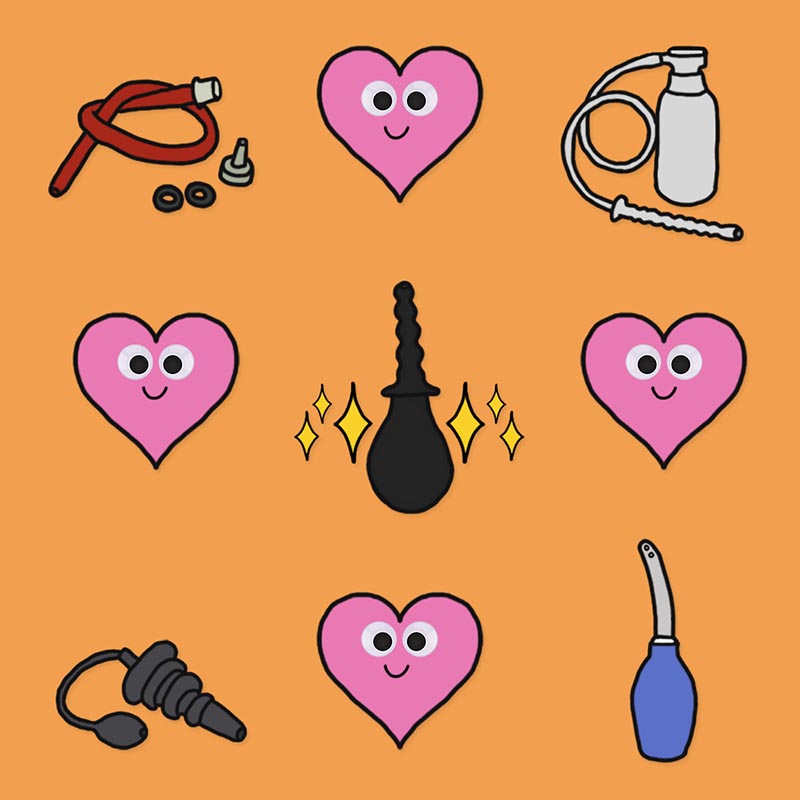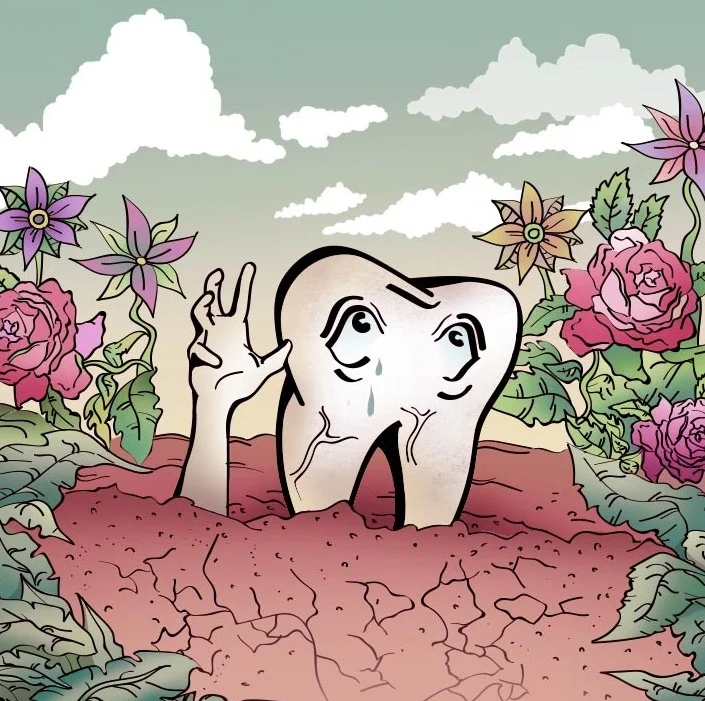The People Who Hate Their Own Limbs
Part I
For otherwise healthy-bodied people, BIID is a rare condition that spurs a desire to amputate body parts — sometimes by whatever means necessary.
By Jessie Schiewe
It’s one thing to loathe a body part that doesn’t work right or looks weird. But what if you felt that way about a limb that was perfectly normal? (Art: Ivan Chadinski)
Charlotte Dabrowsky’s* desire to chop off part of her left leg began when she was 12. That’s when she became aware of how itchy it was, how it didn’t feel like part of her body, and how, in her mind, it would be better if it weren’t there at all.
Dabrowsky — now 26, married and living in Canada — loves cats, hot dogs with mustard and onions, and farming simulator video games. She also still struggles with the desire to amputate her limb every single day.
She says that, if she closes her eyes, she can feel her hands against her sides. She can feel her fingers when she wiggles them, her head when she tilts it, her right leg when she moves it. She can feel everything except for her left leg, from mid-thigh down to her toes. There, feeling ceases and her leg seems alien from the rest of her body. She’s so keenly aware — and unaware — of it that she can point to the exact spot where the “real” her stops and the part of her that’s “just an object” begins.
Dabrowsky suffers from body integrity identity disorder (BIID), a rare, infrequently studied and highly secretive condition characterized by “an intense and persistent desire” to become disabled despite otherwise being healthy.
Alternatively known as body integrity dysphoria (BID), xenomelia, or apotemnophilia, it usually affects limbs, but can also extend to wanting to be deaf, blind, or paralyzed. Onset tends to occur around age 8 to 12; it’s unknown how many people are afflicted with this condition.
Why Would You Fake Having Cancer?
Those with BIID feel discomfort, embarrassment, or extreme ambivalence toward their unwanted body parts, and may also feel sexual arousal connected to their desire for having those limbs removed or being taken care of afterwards. Unlike those with amputee identity disorder, people who suffer from BIID turn to surgery not because they necessarily want to be handicapped, but because they see the removal of this body part as a cure for their constant suffering.
“The big thing to understand about BIID is that nobody wants to be disabled. It's a means to an end, when the end is ‘not feeling like there's an alien attached to me,’” Dabrowsky told OK Whatever over email. “Somebody else described it as feeling like their soul doesn’t extend into their limb...it’s sort of just an object that’s there.”
If something bumps into her left leg, Dabrowsky might be confused as to where — or what — she touched. Sometimes, when both of her feet are flat on the floor, her brain erroneously tells her that her left leg is crossed over her right. She has even been startled by the sight of it, mistaking her leg for someone else’s and thinking, Who’s sitting next to me?
BIID is such a rare disorder that many afflicted with it don’t even know there’s a name for it. Dabrowsky didn’t learn the terminology until she was 21.
Doctors aren’t even sure what causes it. Some claim it can be triggered by seeing an amputee as a child, while others suspect it has to do with a congenital defect in the brain. Not surprisingly, help for those with BIID is scarce. Outside of talking to a therapist, many solely find support online. Dabrowsky has run closed BIID groups around the internet for several years and has a separate Gmail account that she specifically uses for BIID related things.
People with BIID typically keep their condition a secret. The disorder is highly stigmatized. Dabrowsky, who even uses a pseudonym with her fellow BIID sufferers online, declined to send a OK Whatever photo of the leg she wants to remove. Not only did she worry about people being able to identify her, but taking photos of her leg — which to her feels like it doesn’t belong, but to others looks totally normal — felt trivializing.
“I assume you wouldn't ask a person with facial dysmorphia to send you pictures of the parts of them that are wrong. My body isn't for people to look at and say, ‘Well your leg is completely normal!’”
Alison*, an 18-year-old trans woman who lives in a rural area of the U.S., is similarly clandestine about having BIID. She keeps it a secret from most people in her life, especially her “conservative” parents with whom she still lives.
Further complicating things, Alison is in the process of transitioning, a change that her parents reportedly have no clue about either. Since November 2018, she’s been taking hormones purchased online. Lacking a driver’s license, she often feels trapped at home but, since finishing high school last spring, she said she’s “trying to work on getting out of here, primarily so I can get the help I need.”
Change Your Face Shape Without Surgery
BIID has affected Alison since the age of 14. Though she feels it in both of her arms, “the feeling is the worst” in her hands from the wrists down.
Alison’s battle with BIID makes her feel as if her arms and hands do not belong on her body.
“I do somewhat think I would look more sexually appealing without arms, but this isn’t a very big part of the feeling,” she explained in a Reddit post. “A lot of the times, I feel like don’t deserve [or] haven’t earned my arms, and so they should be taken away from me. I’ve had a lot of childhood trauma, so maybe another part of it is that it would necessitate that someone takes care of me.”
Alison’s BIID initially made her feel insecure and unworthy, leading her to cut herself as a coping mechanism. She’s since stopped self-mutilating and has seen a therapist, but unwanted thoughts about removing her arms still crop up for her.
Dealing With Loneliness Using Pills, Hugs, Robotic Pets, & More
Though Dabrowsky never turned to self-harm, living with BIID pains her.
“It may not seem so bad, but it wears down on you over time,” Dabrowsky said. “A lot of people seem to reach a point where they would rather get rid of the limb than keep living with its weird ‘itchiness.’”
She’s heard of some who have removed their offending body parts and felt immense, lasting relief. She considers it a form of “remission” for people with BIID.
But amputating a limb that’s healthy — at least to the naked eye — can be challenging. Doctors typically refuse to perform the surgery, deeming it self-elective and unethical. Unlike plastic surgery or gender reassignments, “unnecessary” amputations result in disabilities.
Because of this, some with BIID attempt forcing amputations themselves, using guns, large rocks, or oncoming trains to mutilate their limbs to such a degree that they must be surgically removed. Alison admitted that in the past she considered cutting off her arms — or maybe just her hands — but worried about blood loss.
“I’m hopeful that there’s different therapy methods that haven’t been tried,” she wrote to OK Whatever in an email. “I would love to be treated in a way that lets me keep my arms as they’re obviously very important in my daily life.”
Some strides have been made for those like Alison and Dabrowsky: In 2014 the condition was, for the first time ever, listed in the International Classification of Diseases, the global health standard for diagnosing diseases and other health problems. But more research needs to be done to understand the root cause of the condition and how best to treat it — aside from amputation.
Until then, those with BIID must continue living as is, coping with limbs that cause pain or irritation and body parts that don’t feel like they belong.
“I often feel like an animal caught in a trap,” Dabrowsky said. “Chewing the leg off is just what you have to do sometimes.”
*Pseudonyms have been used to protect the identities of these subjects.
Don’t miss Part II in the series: “The Man Who Cured Himself of BIID”






















A nonprofit has an innovative solution for cleaning up oil spills.